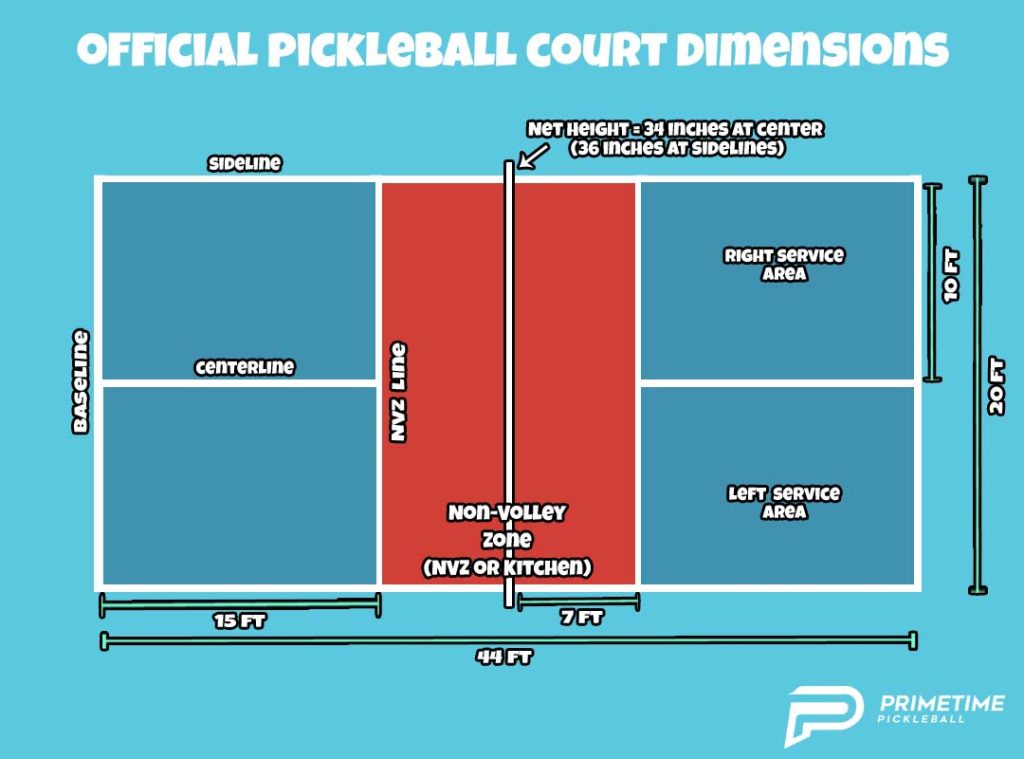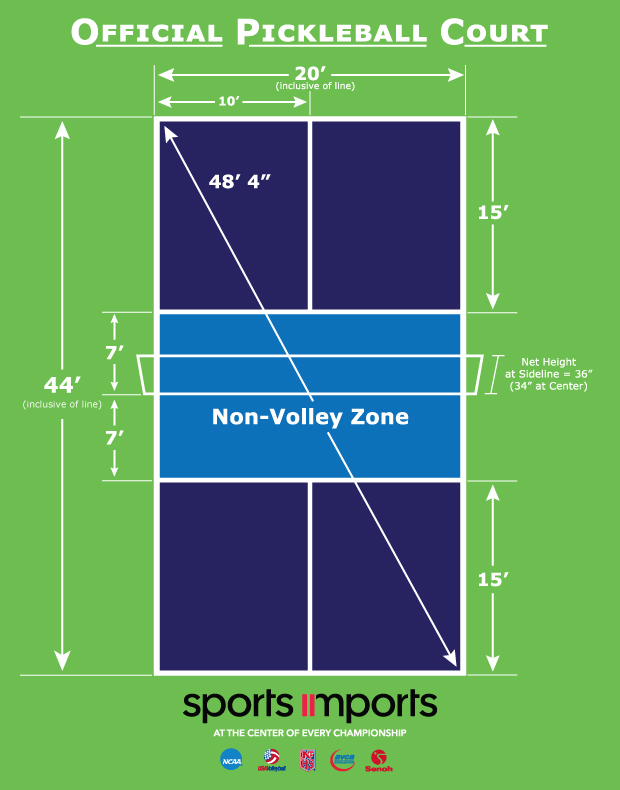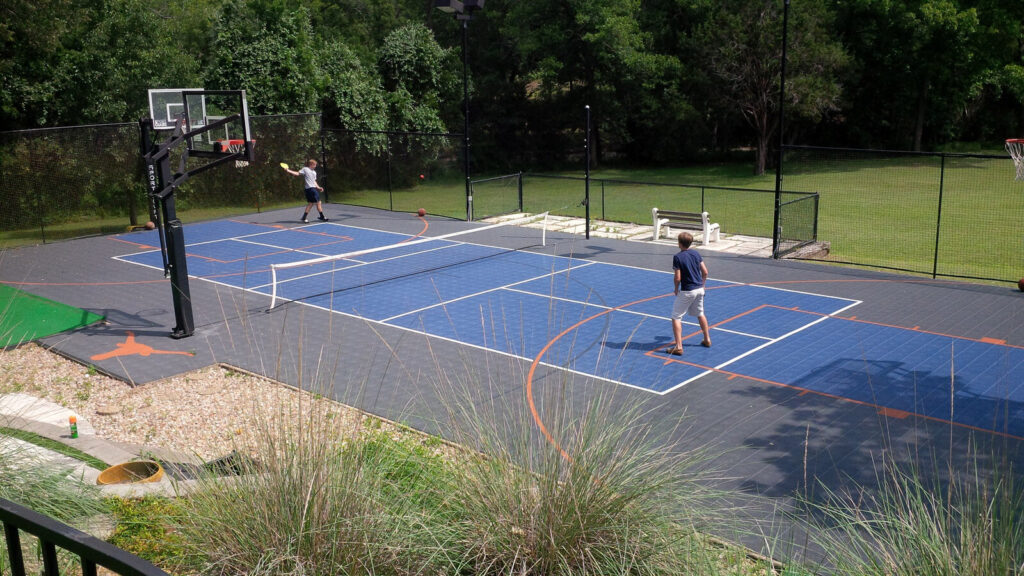A pickleball court measures 20 feet wide and 44 feet long. Pickleball is a popular sport that combines elements of tennis, badminton, and ping-pong.
It can be played indoors or outdoors, and requires a specific court size for optimal play. The measurements for a pickleball court are 20 feet wide and 44 feet long. The court is divided by a net, similar to tennis, with a non-volley zone on each side.
Pickleball is a fast-paced game that can be enjoyed by players of all ages and skill levels. In recent years, it has gained popularity worldwide, with tournaments and leagues being organized in various countries. Whether you are a beginner or an experienced player, understanding the measurements of a pickleball court is crucial for a successful game.
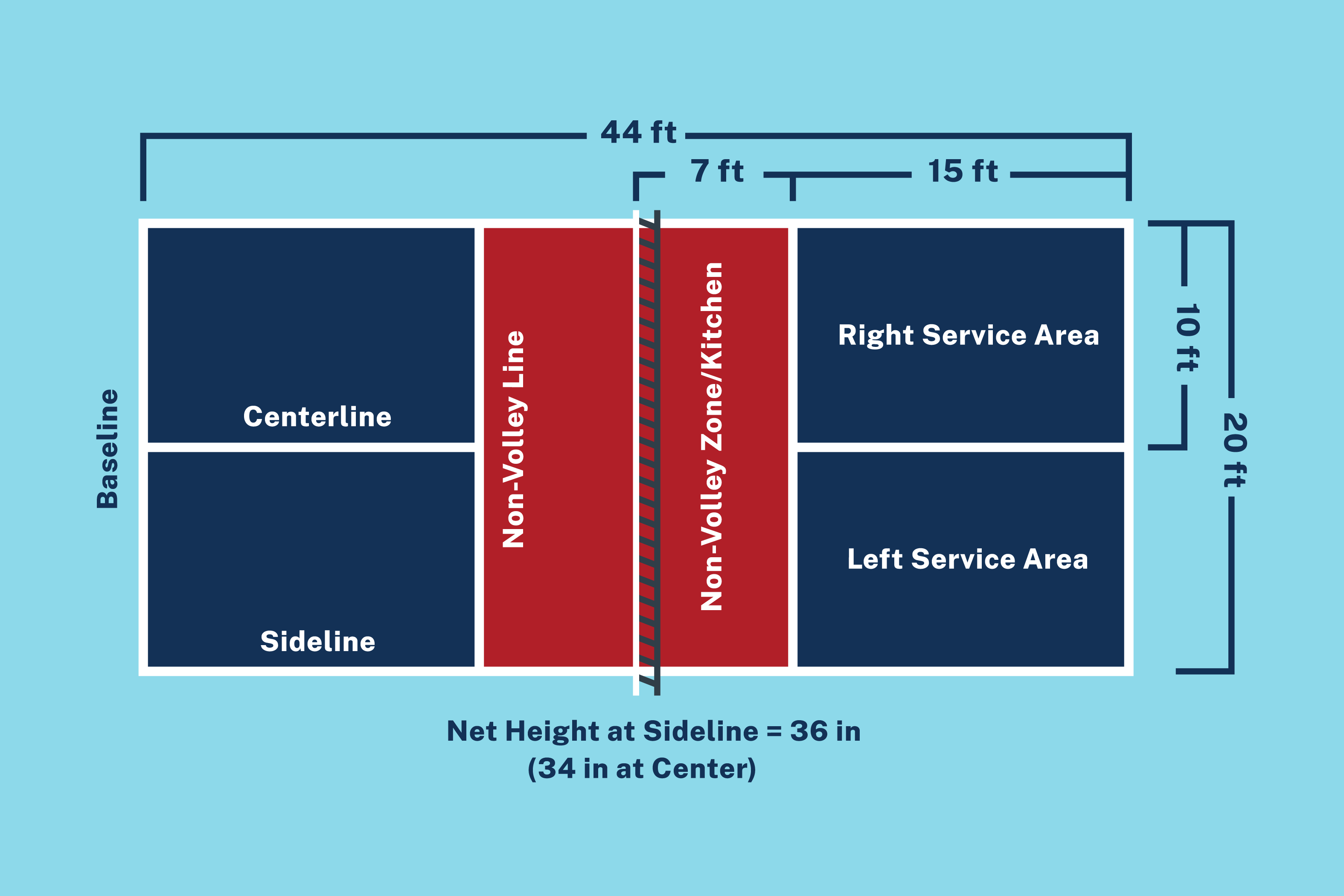
Credit: usapickleball.org
Standard Measurements For A Pickleball Court
When it comes to pickleball, having the correct court measurements is crucial for a fair and enjoyable game. Whether you’re a beginner or a seasoned player, understanding the standard measurements for a pickleball court is essential. In this article, we’ll take a closer look at the court dimensions, net height, and sideline and baseline clearances that you need to know.
Court Dimensions
In a pickleball game, the court dimensions play a significant role in determining the overall gameplay. A standard pickleball court measures 20 feet wide and 44 feet long. These dimensions are similar to those of a doubles badminton court. The playing area is divided into two halves by a 36-inch high net, with each half measuring 20 feet wide and 22 feet long.
Net Height
One of the critical aspects of a pickleball court is the net height. The net should be positioned at a height of 34 inches at the center and 36 inches at the sidelines. This slight variation in height ensures a fair game for both the players on either side of the court. The lower net height at the center allows for more aggressive shots while maintaining the integrity of the game.
Sideline And Baseline Clearances
For a proper pickleball court, it’s important to maintain clearances along the sidelines and baselines. A minimum clearance of 7 feet should be maintained along the sidelines to provide ample space for players to move freely and avoid any obstructions during the game. Similarly, a clearance of 12 feet is necessary at the baselines to allow players to retreat and return shots effectively without any hindrance.
By adhering to these standard measurements, you can ensure a level playing field for all pickleball players. Whether you’re competing or simply enjoying a friendly game, having the court dimensions, net height, and sideline and baseline clearances correctly set up will enhance your gameplay experience.
Materials And Markings
A pickleball court is a specific playing area where the sport of pickleball is enjoyed. The court is marked with materials and markings that are essential for the game’s structure and rules. These materials and markings include the court surface, court markings, and the net and posts. Each of these elements plays a crucial role in ensuring a fair and enjoyable game. Let’s explore the details of these materials and markings.
COURT SURFACEThe court surface is an important aspect of the pickleball court. It provides the foundation for smooth gameplay and determines the level of ball bounce. The ideal court surface for pickleball is a hard and smooth playing surface, typically made of asphalt or concrete. Such surfaces offer excellent ball control and consistent bounce, allowing players to concentrate on their techniques and strategies. The hard court surface also eases the lateral movement required in the game, minimizing the risk of injuries.
COURT MARKINGSThe court markings are necessary to define the boundaries and specific areas of the pickleball court. These markings ensure that the game is played within a standardized area, adhering to the rules and regulations of pickleball. The court is divided into two equal halves by a centerline, which runs from the baseline to the opposite baseline. This centerline creates two distinct
NET AND POSTS
NET AND POSTSThe net and posts on a pickleball court are integral to the game. The net should be placed at the center of the court, extending 34 inches above the ground. It divides the court into two non-volley zones, also known as the kitchen or no-volley zones. Additionally, the net height ensures a fair game by preventing easy volleys and promoting strategic play. The net is supported by sturdy posts placed on each side of the court, ensuring stability and proper tension of the net.
In conclusion, the materials and markings of a pickleball court provide the necessary structure and boundaries for a competitive and engaging game. The court surface, court markings, and net and posts contribute to the overall experience of players, ensuring fair gameplay and a level playing field for all participants.
Outdoor Vs Indoor Pickleball Court Measurements
In the game of pickleball, having the right court dimensions is crucial to ensure fair play and a enjoyable experience for players. Whether you’re playing outdoors or indoors, the measurements for a pickleball court do have some variations. Let’s explore the specific dimensions for outdoor and indoor pickleball courts.
Outdoor Court Dimensions
For outdoor pickleball courts, the standard dimensions are:
- The overall court size should be rectangular, measuring 20 feet wide and 44 feet long.
- The playing area, known as the court proper, measures 20 feet wide and 40 feet long.
- For doubles play, there should be a non-volley zone or kitchen area on both sides, extending 7 feet back from the net.
- The net should be positioned at a height of 36 inches in the center and 34 inches on the sidelines.
These dimensions ensure enough space for players to move around and maintain strategic positioning during the game. The non-volley zone helps to prevent players from executing smashes or volleys too close to the net, encouraging more skillful and strategic play.
Indoor Court Dimensions
Indoor pickleball courts generally adhere to the same dimensions as outdoor courts. However, there may be slight variations based on the available space in the facility. Some indoor courts may be smaller in size, with reduced playing areas due to space constraints. It’s essential to adjust the court measurements accordingly without compromising on the overall gameplay.
Indoor pickleball courts often have hard surfaces such as wood or synthetic materials, ensuring consistent ball bounce and providing a more controlled playing environment for players.
Regardless of whether you choose to play pickleball outdoors or indoors, adhering to these court measurements will help create a fair and enjoyable playing experience for all.
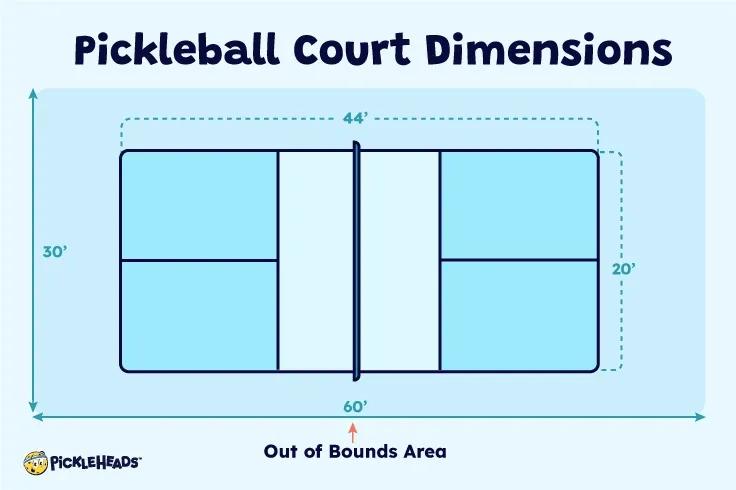
Credit: www.pickleheads.com
Additional Considerations
For a pickleball court, there are several additional considerations to take into account when determining the measurements. These include the space required for the playing area, the dimensions of the lines, and the clearance around the court for players to move comfortably.
While understanding the measurements for a pickleball court is crucial, there are several additional considerations to keep in mind. These factors can greatly impact the playing experience and ensure the court is safe and enjoyable for all players. From portable pickleball court dimensions to court lighting and overhead obstructions, let’s explore these aspects in further detail.
Portable Pickleball Court Dimensions
When it comes to portable pickleball courts, it’s essential to consider the dimensions to ensure compatibility and ease of use. While official pickleball court dimensions are common for permanent courts, portable courts often come in various sizes. However, the most popular portable pickleball court dimensions are:
| Portable Court Type | Dimensions (Length x Width) |
|---|---|
| 2-Court Set | 44 feet x 20 feet |
| 3-Court Set | 66 feet x 20 feet |
| 4-Court Set | 88 feet x 20 feet |
Court Lighting
Court lighting is an essential consideration for playing pickleball during low-light conditions or in indoor facilities. Adequate lighting not only enhances visibility but also reduces the risk of injuries caused by poor visibility. When installing court lighting, ensure it is strategically placed to eliminate shadows and provide uniform illumination across the court. Consider using energy-efficient LED lights, which offer superior brightness and longevity compared to traditional lighting options.
Overhead Obstructions
Overhead obstructions can significantly impact the gameplay and safety of a pickleball court. It’s essential to identify any obstacles that may obstruct the trajectory of the ball or hinder player movements. Common overhead obstructions include trees, power lines, or any structures that hang low over the court. Clearing these obstructions or opting for a different court location will help ensure an uninterrupted playing experience and prevent injuries caused by collisions with overhead objects.
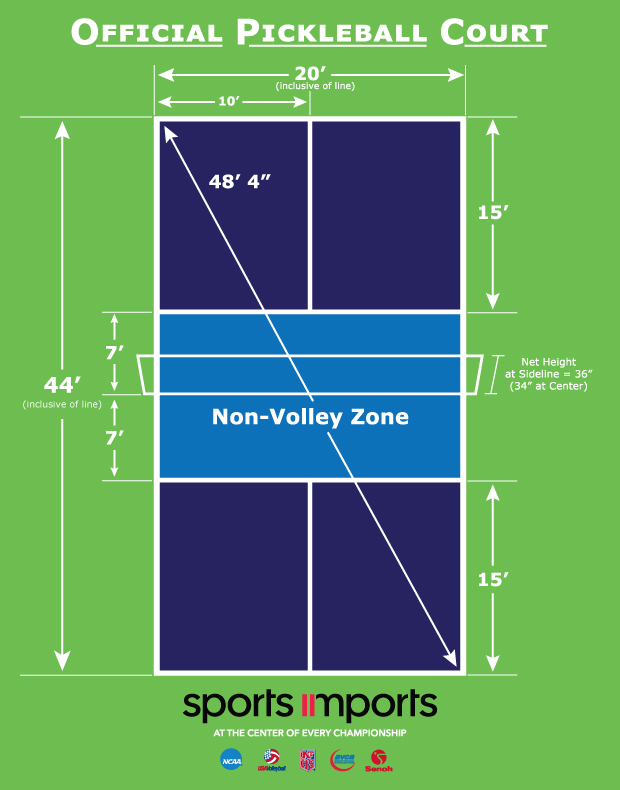
Credit: www.sportsimports.com
Frequently Asked Questions For What Are The Measurements For A Pickleball Court
What Are The Dimensions Of A Pickleball Court?
A pickleball court measures 20 feet wide and 44 feet long, with a non-volley zone extending 7 feet from the net on each side.
How Much Room Do You Need Behind A Pickleball Court?
A pickleball court requires a minimum of 6 feet of space behind the baselines and 10 feet on each side.
What Are The Dimensions Of A Pickleball Court With Fencing?
The dimensions of a pickleball court with fencing are 44 feet long by 20 feet wide, which is the standard size. The fencing provides boundaries and adds to the overall safety and security of the court.
How Many Square Feet Do You Need For An Indoor Pickleball Court?
An indoor pickleball court typically requires a minimum of 30 feet wide and 60 feet long, totaling 1,800 square feet.
Conclusion
To summarize, knowing the correct measurements for a pickleball court is essential for players and enthusiasts alike. By following the guidelines outlined in this blog post, you can ensure that your court meets the required standards. Whether you plan on playing casually or competitively, having a properly sized court will enhance your gameplay and overall experience.
So, get out there and enjoy the sport while abiding by the correct measurements!
Neil jacobson is an avid Pickleball enthusiast, writer, and coach dedicated to sharing the joy and intricacies of the sport. With 6 years of experience on the court and a passion for teaching, Courtney brings a unique perspective to his writing, offering practical insights and strategies for players of all levels. As a certified Pickleball coach, his mission is to inspire and empower individuals to excel in the game while fostering a sense of community within the Pickleball world. Through his articles, guides, and coaching sessions, Neil aims to elevate the playing experience and share the infectious enthusiasm that defines the Pickleball community.

